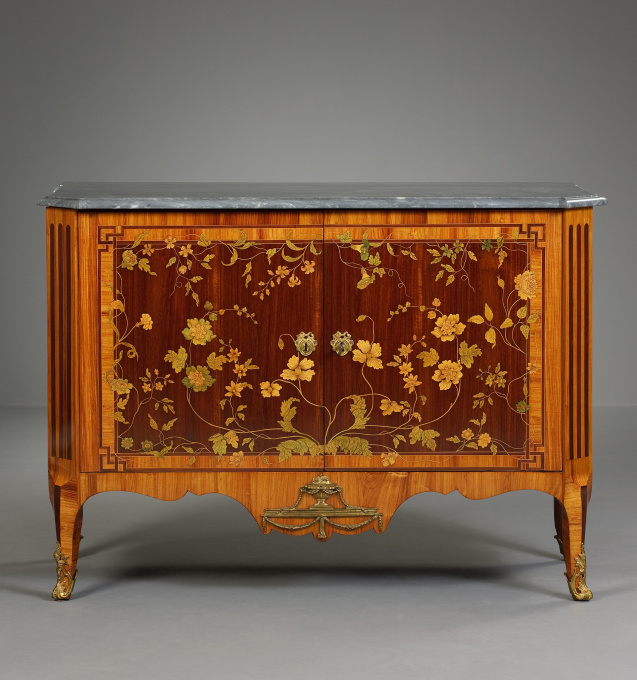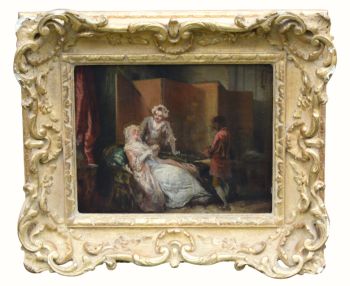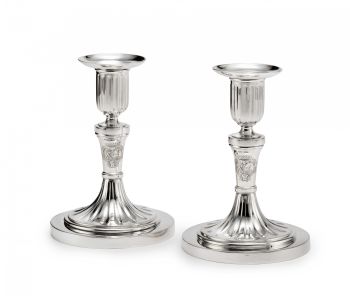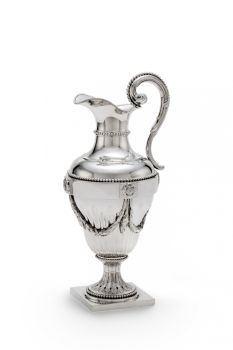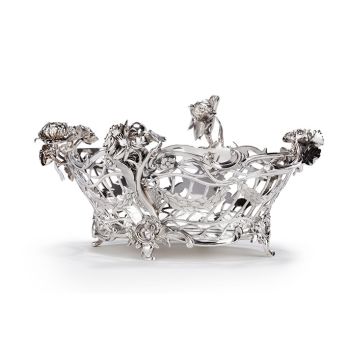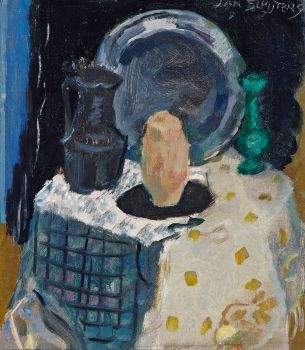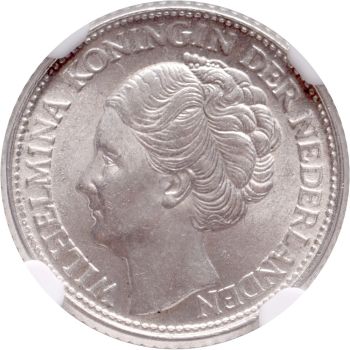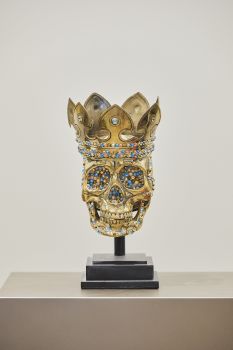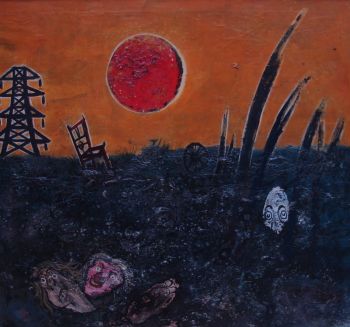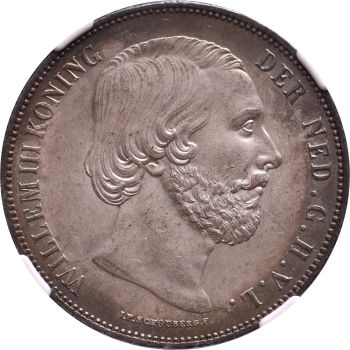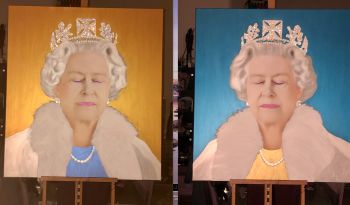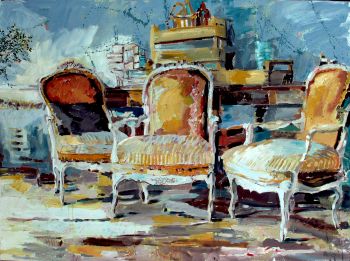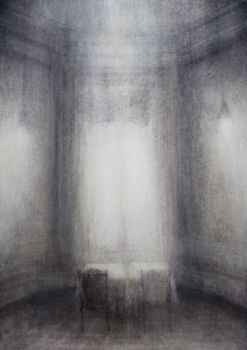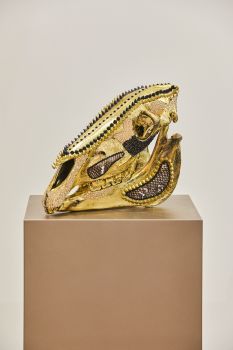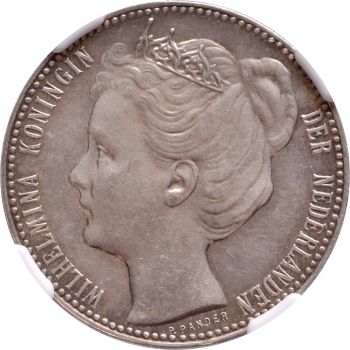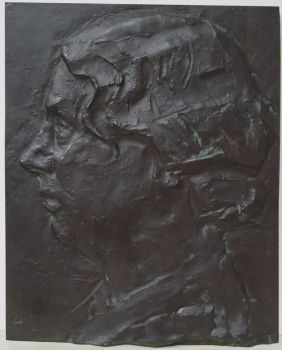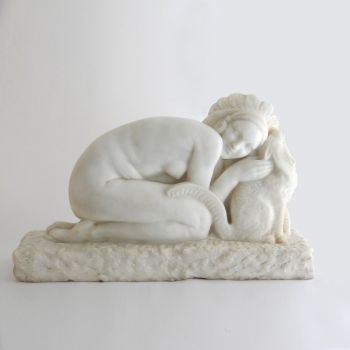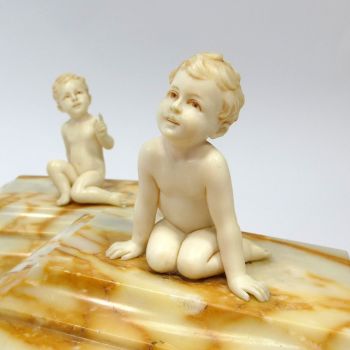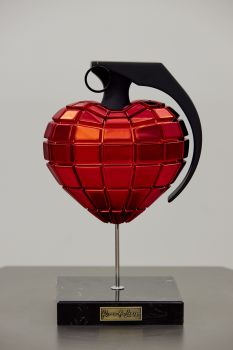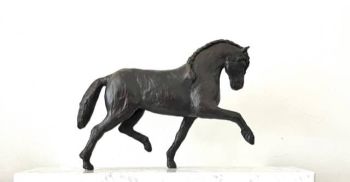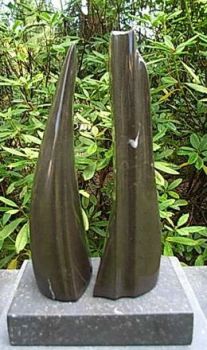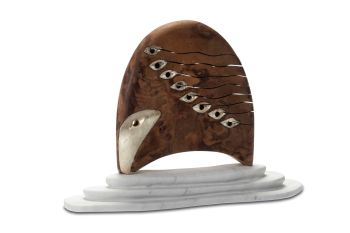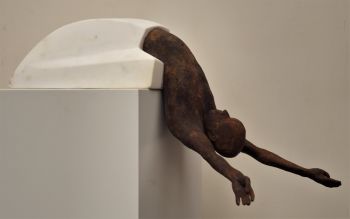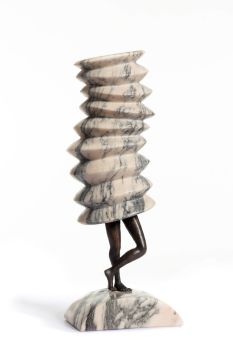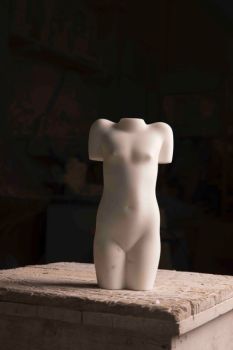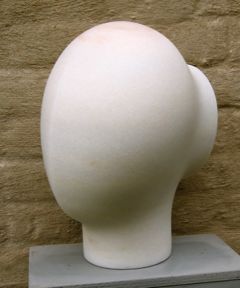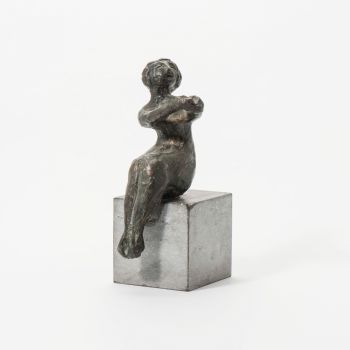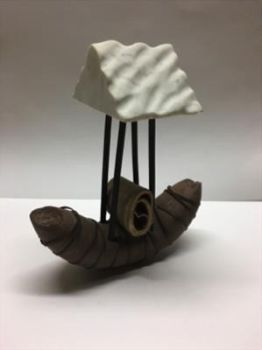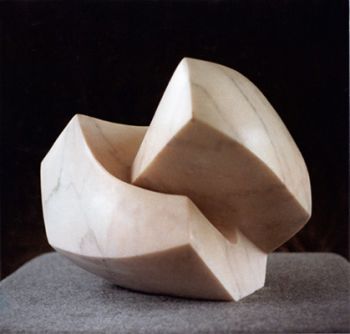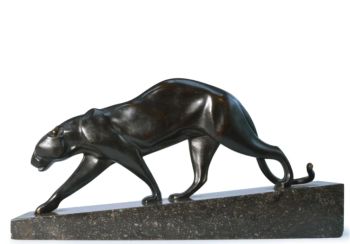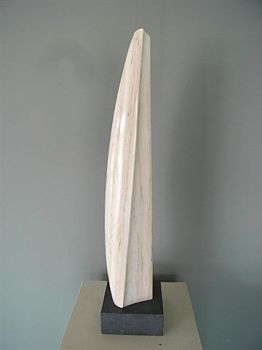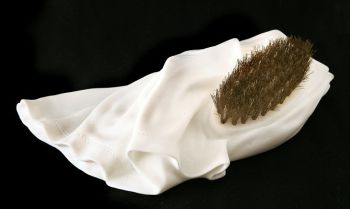A Dutch Transition Commode with Marquetry 1775
Unknown artist
MarbleStoneAmaranthGoldGiltGemstone
91 ⨯ 123 ⨯ 60 cm
Currently unavailable via Gallerease
- About the artworkA Dutch commode in a simple design, with two doors in the front. The marble top follows the contours of the object, after the example of the French commodes of the day.
This object marks the transition from Rococo to Classicism. The “bulged” forms typical for the 1760-1770 period have disappeared, but the cabriole legs with firegilt bronze fittings still remind of the Rococo.
The exceptional fine marquetry of flowers on the front and sides is surrounded by a dark trim. The fitting with the urn and garlands under the doors is known from an English catalogue of the time and is probably from Birmingham (Baarssen, fig. 46). A similar fitting is found on an encoignure by Matthijs Horrix, that, remarkably, also has the same cabriole feet and “sabot” fittings. - About the artist
It might happen that an artist or maker is unknown.
Some works are not to be determined by whom it is made or it is made by (a group of) craftsmen. Examples are statues from the Ancient Time, furniture, mirroirs, or signatures that are not clear or readible but as well some works are not signed at all.
As well you can find the following description:
•“Attributed to ….” In their opinion probably a work by the artist, at least in part
•“Studio of ….” or “Workshop of” In their opinion a work executed in the studio or workshop of the artist, possibly under his supervision
•“Circle of ….” In their opinion a work of the period of the artist showing his influence, closely associated with the artist but not necessarily his pupil
•“Style of ….” or “Follower of ….” In their opinion a work executed in the artist’s style but not necessarily by a pupil; may be contemporary or nearly contemporary
•“Manner of ….” In their opinion a work in the style of the artist but of a later date
•“After ….” In their opinion a copy (of any date) of a work of the artist
•“Signed…”, “Dated….” or “Inscribed” In their opinion the work has been signed/dated/inscribed by the artist. The addition of a question mark indicates an element of doubt
•"With signature ….”, “With date ….”, “With inscription….” or “Bears signature/date/inscription” in their opinion the signature/ date/ inscription has been added by someone other than the artist
Artwork details
Related artworks
- 1 - 4 / 12
Unknown artist
A Surinam-themed Amsterdam long-case clock1746 - 1756
Price on requestZebregs & Röell - Fine Art - Antiques
 Curated by
Curated byGallerease Magazine
Reynier de Haan
An elegant Louis XVI Dutch Silver Monteith Bowl 1778
Price on requestJacob J. Roosjen SRI
1 - 4 / 24Unknown artist
AN IVORY NETSUKE OF A DUTCHMAN FROLICKING WITH A SMALL BOY18th century
Price on requestZebregs & Röell - Fine Art - Antiques
Unknown artist
A MARINE IVORY NETSUKE OF A DUTCHMAN HOLDING A CHINESE FAN18th century
Price on requestZebregs & Röell - Fine Art - Antiques
1 - 4 / 24Reynier de Haan
An elegant Louis XVI Dutch Silver Monteith Bowl 1778
Price on requestJacob J. Roosjen SRI
Reynier de Haan
An elegant Louis XVI Dutch Silver Monteith Bowl 1778
Price on requestJacob J. Roosjen SRI
Lambertus Zijl
Portrait of Juliana, queen of the Netherlands (1948-1990)1900 - 1950
Price on requestKunsthandel Pygmalion
1 - 4 / 24- 1 - 4 / 24

